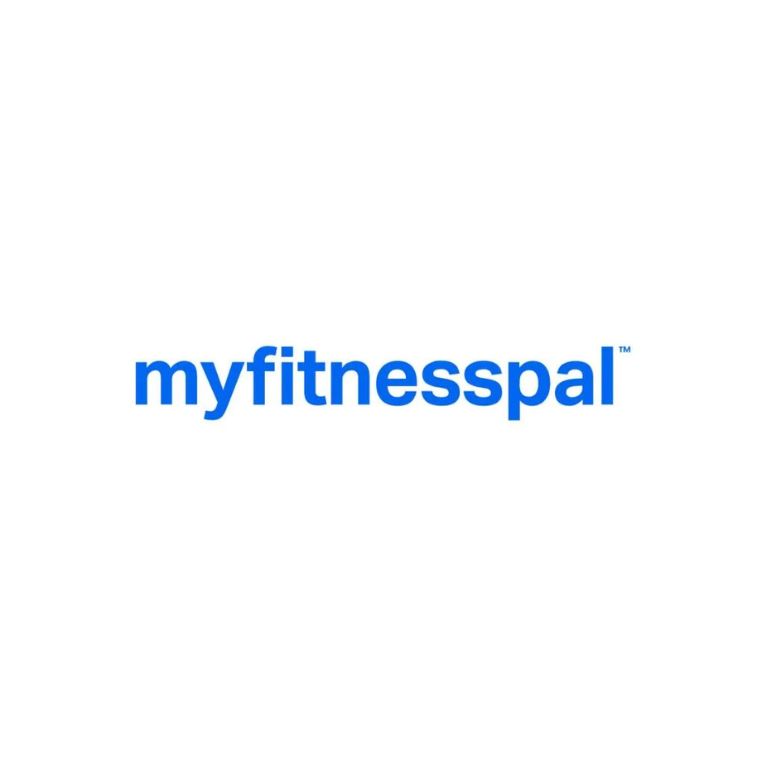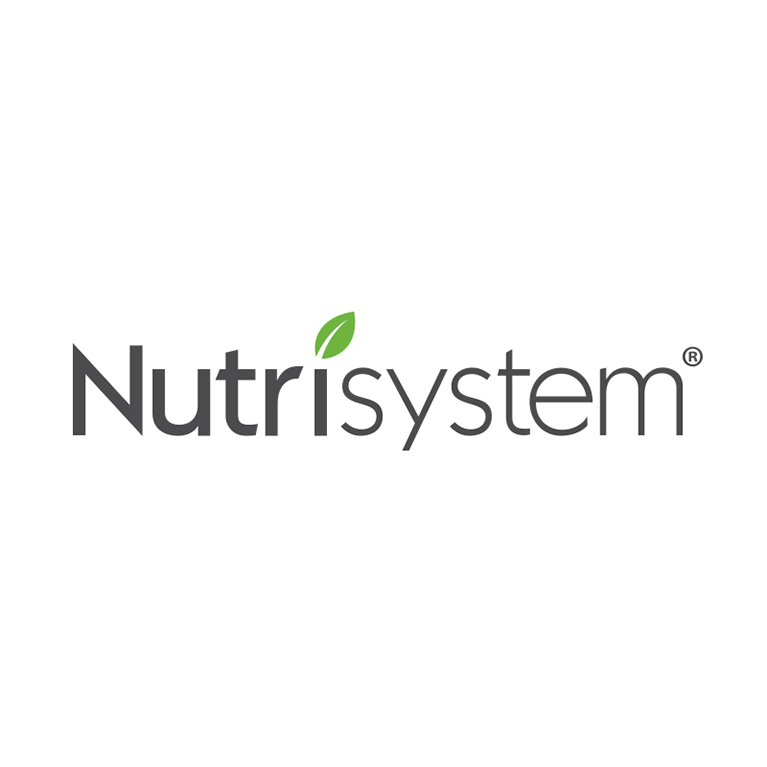If you’ve been in the market for a weight loss program over the past few years, you may have heard of Noom, which uses psychology to get long-term results. The program boasts its ability to help you lose weight and keep the weight off for good, thanks to its focus on behavior changes that create sustainable habits.
Noom works to help you better understand the reasoning behind why you make certain food and exercise choices. But, our team has mixed feelings about the messaging associated with Noom’s methods. So we’re breaking down this psychology-based weight loss program to give you the highs, lows, and potential consequences of using Noom for yourself.
Medical disclaimer: This article is intended for educational and informational purposes only. It is not intended as a substitute for medical advice. For health advice, contact a licensed healthcare provider.
To evaluate your risk of an eating disorder or disordered eating, take the National Eating Disorders Association (NEDA) free assessment. For additional support, please contact the NEDA helpline at 1-800-931-2237.


Key product features
What you should know
Noom is a weight-loss program that uses psychology, coaching, and technology to help users focus on sustainable diet, exercise, and lifestyle changes.
- Noom’s daily lessons and motivational messages are encouraging, and the course map makes it easy to keep track of progress.
- While Noom is originally expensive, at $70 per month, the cost decreases the longer you commit. An entire year is $209—just over $17 a month.
- Noom is a good option for those who have previously had trouble sticking to traditional diet and exercise plans and want convenient support and education as they work to change their habits.
- Noom may not be appropriate for anyone who has struggled with disordered eating patterns, as the food grading system may trigger and exacerbate food restriction and fear.
What is Noom?
Noom is a psychology-based weight loss program that was developed in 2008 but gained momentum as it became a mobile app in 2016. The program uses daily lessons and motivational messages to encourage and motivate you as you work towards your goals, while helping you understand the reasoning behind your food and exercise choices.
To further support your goals, Noom offers a way to track your meals, exercise, and weight and individualized support from a coach as you work through the program.
Noom Weight Loss is the original Noom program and is different from the newer Noom Med program, which is made for users of weight loss injectables like Ozempic or Wegovy.
Specs
| Price | $17.40 to $70 per month |
| Platforms available | iOS and Android |
| Trial period | 7 or 14 days for $0.50 to $18 |
| Add ons | Health testing, scales, merchandise, and tracking programs and devices |
How does Noom work?
The Noom app helps users lose weight and develop healthier habits through a combination of psychology, tracking, and virtual human coaching. Here’s an overview of how Noom works to help you lose weight:
Creates a personalized plan
When you first sign up for Noom, you’ll complete a detailed questionnaire about your health, exercise, lifestyle, nutrition, and weight goals. Based on your answers, Noom will create a “personalized” weight loss plan tailored to your specific needs, although our testers (and other users) wonder whether it truly is unique to their responses or simply a plan based on the weight goal. However, Noom does state that they use the Harris-Benedict equation, which is one of the most valid and reliable methods of calculating calorie intake. As you work through the questionnaire, you’ll receive an estimate of when you’ll reach your weight goals if you follow the plan Noom lays out for you.
Complete daily lessons
To deliver the psychology-based approach to weight loss, Noom includes short, interactive lessons each day. Depending on your specific needs, these lessons will cover topics like nutrition, exercise, stress management, and overall behavior change for healthier habits. The lessons are broken down into a course map so you can easily follow your progress through the material.
Log your food
Noom has an in-app food tracking system that encourages you to log your meals and snacks. The color-coded system (green, yellow, and orange) is meant to help you identify and encourage more nutritious food choices.
Foods in the green category should be eaten frequently and include:
- Non-starchy vegetables
- Fruits
- Whole grains
- Non-fat dairy
- Tuna
Yellow foods are things that should be eaten occasionally, like:
- Chicken
- Salmon
- Eggs
- Beans
- Low-fat dairy
- Avocado
- Drinks with artificial sweeteners
- Low-calorie alcoholic beverages
Orange foods should be eaten only sparingly and include:
- Nuts
- Seeds
- Oils
- Dried fruits
- Soda
- Whole fat dairy
As a dietitian, I see this color coding system as potentially problematic, as it discourages highly nutritious and satisfying foods like nuts, seeds, and many proteins. While it is a good idea to eat plenty of fruits, vegetables, and whole grains, this type of system may lead people to feel guilty when they enjoy nutrient-dense and healthful foods (in the yellow or orange category) or avoid them altogether.
“Many foods in both of those categories are very nutrient dense—like salmon, eggs, beans, nuts, and more. Color coding foods based on just calories limits the overall quality of the diet, since so many important nutrients, let alone food satisfaction, may come from eating some of those other foods.”
Chris Mohr, Ph.D, RD, Fortune Recommends Advisor
As you log your food, the program calculates your calories for you, helping you stay within the suggested daily calorie range for your weight loss goal.
Track your exercise
You can use Noom’s app to log your workouts and daily steps. This helps Noom calculate how many calories you’ve burned. The program then records your progress as you work towards any fitness goals you may have set.
Virtual coaching support
When using Noom, you’ll receive motivation from a “bot” coach, as well as one-on-one individual support from a real, human coach. As a Noom member, you’re paired with a personal coach who can provide you with support, motivation, and accountability towards your goals. You’re free to message your coach at any time and receive personalized support; our testers did note that it could take several hours to get a reply.
Support of a community of “Noomers”
For even more support, Noom offers an online community of other members with similar goals. You can join group chats, share experiences, and support each other as you make headway toward your goals. You’ll also have the option to connect your program with a family member or friend of your choosing for even more support in long-term weight loss. (1)
“Accountability is a key factor when it comes to long term success. This accountability can come from a family member, friend or coworker, or an ‘accountability coach’ or community. But going at it alone almost makes it more challenging for most,” says Mohr.
Track your progress
To keep you motivated and working towards your goals, Noom keeps track of your progress, allowing you to view how far you’ve come in the following areas: weight, nutrition, exercise, blood pressure, and blood sugar. Research has found that people who consistently track their progress are more likely to see significant weight loss results compared to those who only track their metrics occasionally. (2)
In addition to the Noom app, you can download the stand-alone, free Noom Vibe app from the Apple App Store on iOS or the Google Play Store on Android to track steps and habits, earn rewards, and listen to content from Noom wellness coaches.
How much does Noom cost?
The longer you commit to Noom, the cheaper it gets per month. The program starts at $70 for a monthly subscription (which auto-renews) but goes to $209 for a one-year subscription. That full-year subscription lowers your monthly price to just $17.40.
For an additional cost, Noom offers add-ons like a branded foot scale, Oura ring, metabolic health panel testing, and meal and exercise plans that offer additional ways to supplement your weight loss efforts. These add-ons are available from partner sites or the Noom shop.
“Health trackers, like rings, watches, and others, may enhance the outcomes for many. What gets measured, gets managed. What’s most important, however, with any tracking tool is not the tool itself, but how the tool is used. How are these data used and for what possible outcomes?” says Mohr. (3)


What foods can you eat on the Noom diet?
One of the features that makes the Noom program different from restrictive diet plans is that, technically, no foods are off-limits. However, the program does assign foods to one of three color categories based on calorie density and nutritional value. “Green” foods are encouraged, “yellow” foods are advised to be eaten occasionally, and “orange” foods are encouraged to be eaten sparingly.
This traffic light system by itself has been found to decrease calorie consumption even without additional nutrition education or tracking. Over a two-year period, employees at a hospital in Boston, Massachusetts, had a 6.2 percent decrease in calories per transaction and a 23 percent decrease in calories from the unhealthiest foods with the implementation of the stoplight system. (4)
Noom emphasizes that color coding does not mean “good” or “bad.” At the same time, the program notes that “orange foods can raise a ‘red flag’ for foods that contain a lot of calories without filling you up.”
Our experience using Noom
In our experience, Noom provided a lot of encouragement, which is appreciated, especially when our testers felt uncertain about the program or their progress. Daily motivational messages, memes, and quotes helped keep interest and commitment high. However, we have some concerns about the personalization of the program—our testers were left wondering if the program was actually tailored to their needs or just provided generic advice.
Despite the uncertainty about personalization, logging meals was straightforward, as the app automatically calculated calories and tracked intake against a suggested daily range to achieve testers’ weight loss goals. Our testers appreciated the educational aspect of Noom, which included daily lessons on nutrition and the psychology behind eating habits. The structured course map made it easy to see progress from a higher level. While we found it difficult to go back and look at lessons already completed, the quizzes are great reminders of what you’ve already learned and you can easily bookmark lessons as you’re going through them.
Noom’s previously-mentioned food classification system, which uses color codes (green, yellow, and orange) to indicate caloric density, was a mixed bag. While it aimed to simplify healthy eating, some testers felt it promoted a “good” vs. “bad” food mentality, perpetuating disordered eating patterns.
While there isn’t much research about how Noom or traffic-light dieting can impact disordered eating, as a registered dietitian, I’ve worked with several people who have developed disordered eating habits after using Noom. (5) Some people may inherently associate these colors and grading systems with good and bad and morality. Depending on someone’s relationship with food, it can easily be interpreted as, ‘You’re good for eating green foods and bad for eating orange or yellow foods.’
One of our testers noted that the food color-coding system made them feel guilty about their food choices. Quizzes and games within the program, like the Grocery Grab game, test your knowledge about food choices and can leave you feeling confused when healthy but calorie-dense foods like chia seeds or almonds are categorized as orange foods. While it’s true that you wouldn’t want to eat as large of a volume of chia seeds as you do, say, kale, it’s still a food that can easily fit into your diet frequently, just with a smaller portion. One ounce of chia seeds has almost 10 grams of fiber, 23% of the daily value (DV) for magnesium, and 316% DV for omega-3 fatty acids, all nutrients essential for health. (6) Since researchers estimate that only 7% of the population meets fiber requirements and 48% of people do not get enough magnesium through their diet, discouraging a nutrient-rich food like chia seeds is not helpful to overall health. (7, 8)
We also found the app’s recipe section limited, and wish filtering for time and skill levels, preferences, and dietary restrictions was easier.
While exercise was not a major focus while we were testing the app, tips and motivation to increase activity were included. Overall, our testers had mixed experiences with coaching support. The personal coaches were generally compassionate and supportive, but the response times were sometimes slow—taking three hours or more—which made it less like a chat and more like email support. And it was fairly obvious when our tester’s coach had been replaced with a bot; the bots had generic encouragement while the coaches offered more personalized and thoughtful responses. While AI coaching has been found to be beneficial, the empathy and support from a human coach is much greater. (9)
Our testers’ customer support experiences varied, but overall we found Noom’s support to be slow and impersonal. That said, when the support phone number was called, the customer service representative was helpful and friendly. The same can be said about making a cancellation. Canceling our Noom subscription was simple, and we received quick responses and resolutions for the billing issue that we did happen to have.
Overall, Noom’s combination of psychological insights, coaching, and food tracking provided a comprehensive weight loss tool, which made it easy to see how it can be a sustainable approach to losing and keeping off weight.
Pros and cons of Noom
While we loved a few of the features Noom offers, there is room for improvement.
Pros of Noom
There were a few key things that we liked about Noom.
First and foremost, we love that Noom’s educational system utilizes cognitive behavioral therapy (CBT) techniques to provide insight into the reasons behind choices and encourage habits that create a healthy and sustainable lifestyle. (10) And, the daily lessons and messages Noom offers help encourage consistency; the human coaching aspect adds a personalized touch of support and guidance through feedback and specific needs. Receiving daily messages while in a weight loss program has been shown to increase motivation and help decrease body mass index (BMI). (11)
If you need even more support, you have a whole community of other “Noomers” with similar goals right at your fingertips with group chats and forums.
“The community aspect and support is always helpful; it’s nice to connect with others who may have similar goals and who can support one another in achieving those goals,” Mohr says.
We also like that the weight loss goals Noom sets are created to be sustainable and healthy. The goal is half a pound to two pounds of weight loss per week, and the app makes it easy to track everything from food intake to steps, exercise, weight, and more to see your progress. And since Noom’s calculation uses the Harris-Benedict equation for estimating calorie intake, we know it is accurate and reliable with the information provided from the user.
If you prefer not to count calories or macros, the tracking system helps you make nutritious food choices and stay within your recommended calorie range with its color-coded food logging system. No foods are off limits, and the app encourages flexibility in eating to create sustainable lifestyle changes, not strict diet patterns.
Cons of Noom
There were also a few things we’d change about Noom if given the chance.
First, while the program asks detailed questions before your goals and account are created, the actual goals and content do not always seem catered to the responses, making it feel more generic than the app claims it is.
On the same note, while we do appreciate that there is access to a real human coach, it can take a long time for a response to come through, making it difficult to get real-time assistance or support.
As for the food categorization system, even though Noom is adamant they aren’t assigning “good” or “bad” labels to food, creating the hierarchy of green, yellow, and orange foods based on caloric density creates negative feelings and thoughts toward certain beneficial foods like almonds, salmon, and chia seeds, to name a few. These foods have a lot of nutritional value and are proven to support weight loss and improve other aspects of health, so we don’t love the negative connotation surrounding them. (12, 13)
When it came to recipes, there was no option to filter for preferences, time available, skill level, or dietary restrictions, and the few filter options there were did not always bring up accurate results. We think this is a huge area of improvement for Noom.
Lastly, for people who value more precise tracking, Noom’s logging and tracking system may not be optimal. We found logging to have quite a few hiccups. For instance, instead of a 3-ounce chicken breast, your options are one, two, or three chicken breasts, which could vary greatly in size. Without the option to select an exact portion of food, it’s impossible to know and track the calories or macros you’re really eating.
Even though the basis of this program is that it uses psychology to help you change your eating habits, Noom is not meant to replace a registered dietitian, psychologist, or licensed therapist, especially if you struggle with disordered eating.
Customer reviews
Noom has a 3.8 out of 5-star rating on Trustpilot and has received 63,603 reviews. Many Noom users agree that the program’s concept is effective, and customer service/ease of subscribing and canceling seems to be one of the most common complaints.
“The everyday learnings and psychology are priceless. I’m actually having a big aha! awareness due to Noom. I recommend Noom to everyone I know who’s trying to lose weight and have a healthier overall life.”
Janae, Trustpilot
Many users also really enjoy the community and coaching aspect of Noom. “Knowing I can ‘vent, talk and share’ 24/7 is true joy!” reports user Marguerite.
Some customers who found the program itself effective have struggled with the tech and customer support.
“Started well for 2-3 months and really enjoying it…until recently! Lessons keep re-setting back to the start, and non-AI help has not responded to sort this. Followed instructions to reset it, worked ok for one day, now back to square one,” says KB.
Noom vs other weight loss programs
Like many weight loss apps, Noom claims to promote long-term weight loss for people who purchase and follow their plan. Here is how Noom compares to other popular weight loss programs, including WeightWatchers, MyFitnessPal, and Nutrisystem.
Noom vs. WeightWatchers
Both Noom and WeightWatchers emphasize changing eating habits for long-term weight loss and prioritize tracking, logging, and the importance of community support.
While Noom focuses more on caloric density and categorizes food into a color-coded system, WeightWatchers assigns point values to food, allowing a certain number of points to be accumulated each day. With Noom, you’ll learn more about the psychology of eating and habit-building. WeightWatchers, on the other hand, focuses mostly on portion control.
Regarding community support, Noom users receive access to digital communities and coaching. WeightWatchers has several different tiers of support, ranging from in-person meetings to digital communities and coaching, depending on the level of commitment someone chooses.
Noom vs. MyFitnessPal
Both Noom and MyFitnessPal offer food and exercise tracking systems that focus on calorie counting. But you can’t really compare the two in terms of support—Noom provides extensive support compared to MyFitnessPal through coaching, personalized lessons, and a community. MyFitnessPal’s main feature is food tracking, but they do have community forums and an educational blog available for users to look up desired information as needed, but not as a structured lesson plan. MyFitnessPal’s food database is also significantly larger than Nooms, making it easier to find different options.
Noom vs. Nutrisystem
Noom and Nutrisystem both support weight loss through education and tracking. While Noom provides meal guidance, education, and recipes, Nutrisystem takes meal support a step further by providing pre-portioned meals as part of its weight-loss meal delivery service. While this makes eating according to the Nutrisystem plan easy and convenient, the lack of education and psychological support may make following the plan without purchasing the meals difficult.
Compare Noom

|

|

|

|

|
|
| Noom | WeightWatchers | MyFitnessPal | Jenny Craig | Nutrisystem | |
| Rating | |||||
| Price | $70/month | $23/month + $20 member fee | $19.99/month | $9/month + meals | Club Advantage for $50 for six months or $90 for 12 months; Complete For Partners for $314.99 per shipment |
| Platforms available | iOS and Android | iOS, Android, Apple Watch | iOS and Android | iOS and Android | iOS and Android |
| Free trial | No | 30-day | 30-day | 30-day (not including food) | 30-day (not including food |
Who should try Noom?
Noom is an excellent program for tech-savvy people looking for a more comprehensive and flexible approach to weight loss and health. The tracking features make learning, interacting, and viewing progress simple and easy, but the program may not be appropriate for those who prefer in-person support.
If you want to increase your knowledge and understanding of why your habits around eating, exercise, sleep, and stress management matter and influence your weight, Noom can help you do that. The flexibility in eating patterns is also good for people who struggle following a strict diet or meal plan, as all food groups are acceptable, and there are no completely off-limits foods, just foods that are recommended to be eaten sparingly or rarely.
Who should not try Noom?
While Noom can be an effective weight loss tool for long-term success, it’s not appropriate for everyone. Anyone who has a history of disordered eating may find that the use of calorie limits and color-coded food categorization triggers disordered eating patterns and potentially promotes an unhealthy relationship with food. (14)
On the flip side, those who do best with stricter meal plans or rigid diet rules may find that Noom’s method is too lax and does not provide enough structure.
If you have dietary restrictions or a medical condition that requires diet intervention, Noom may not be appropriate. Its methods, recipes, and plans cater to general health, not specific medication nutrition therapies. While online health coaching and communities provide more support than many other weight loss programs, Noom doesn’t replace one-on-one individualized nutrition therapy with a registered dietitian nutritionist.
Is Noom worth it?
A 2022 study of 840 Noom participants who lost at least 10% of their body weight with the program found that 75% maintained at least a 5% weight loss after one year, and 49% of participants maintained a 10% weight loss during this time. (15) While this study was funded by Noom, which adds a significant conflict of interest, it does show that habits like healthy snacking and exercise, not demographics, played the biggest role in maintaining weight loss.
In a 2016 study including 35,921 participants that does not appear to be funded by Noom, 77.9% of users reported a decrease in weight while using the app for an average of 267 days. The study also found that those who tracked their dinner meals most often had the most success, and those who consistently tracked their weight experienced less weight cycling while using the app. (16)
If you’ve struggled to lose weight and keep it off, finding that you easily return to old, unhealthy habits, Noom may help you to create healthy, sustainable habits.
We’ve featured Noom in:
FAQs
What is the downside of Noom?
While Noom has helped many people lose weight and keep it off, the color-coding food categorization may promote disordered eating patterns, and the lack of customization or real-time coaching interaction may make it unsuitable for some people. Noom’s food database is also not as robust as those in other top food tracking apps. Additionally, $70 per month for a program that’s not truly personalized may deter some users.
Is Noom actually worth it?
For the right person, Noom can help encourage sustainable healthy habits and provide education that may result in long-term weight loss. (15) In this case, it’s worth it.
How does Noom help you lose weight?
Noom uses a psychology-based program that helps you create sustainable behavior changes through lessons, tracking, coaching, and community support.
What is the average monthly cost of Noom?
If purchased month-to-month, Noom is $70 per month. When a yearly subscription is purchased, the price comes down to $17.42 a month, or $209 for an entire year. The more time you purchase upfront, the lower the monthly cost becomes.
Who should not use Noom?
Anyone with a history of an eating disorder or disordered eating behavior may want to avoid Noom. While Noom uses language in its marketing that conveys itself as a method of intuitive eating, a popular strategy many people use while in recovery from eating disorders and disordered eating patterns, it is still a diet program that promotes calorie goals and restriction. (17)
Our experts
Christopher Mohr, Ph.D., RD
Dr. Chris Mohr is an internationally recognized subject matter expert and speaker and performance coach. Through his facilitation and online resources, he works closely with some of the largest corporations in the world including Deloitte, Delta Airlines, Johnson & Johnson and more to help busy executives all over the world, develop the energy to thrive personally and professionally.
Victoria Burgess, Ph.D., CSCS, CISSN
Victoria Burgess earned her Ph.D. in Health and Human Performance from Concordia University Chicago and holds her NSCA CSCS and Certified Sports Nutritionist (CISSN). She is an adjunct professor in the Human Performance and Nutrition department at Concordia University Chicago & Parker University, where she teaches undergraduate, graduate, and doctoral-level courses.
Lily Moe
Lily is a Brooklyn-based writer and editor with over seven years of experience in health media. As a former Fitness Coach, Lily’s editorial prowess has largely focused on fitness, nutrition, and weight management. She has also spent a fair share of time in testing labs, analyzing everything from protein powders to yoga mats. Her work has appeared in Verywell Fit, Verywell Mind, Health, and more.
Jessica Coulon
Jessica is a contributing editor and writer for Fortune Recommends who specializes in fitness, health, nutrition, and science content. Previously, she was an editor for Popular Mechanics and Bicycling, where she covered pro cycling news, wrote how-to guides, and tested all the latest and greatest bike gear. She was also a regular shoe tester and contributor for Runner’s World. You can often find her skiing or riding her mountain bike, and racing with the F1RE female enduro team.
Kelly Uhler
Kelly has a multifaceted background in elder care, health care, and copywriting. She has worked for organizations such as A Place For Mom and Homecare.com, which gave her the opportunity to work closely with families, providing reliable information to help them make informed decisions about their loved one’s health, safety, and quality of life.

Kelsey Kunik
Media Dietician
About Author
Kelsey Kunik is a registered dietitian with 5+ years of experience writing SEO nutrition and wellness content. She writes editorial and commerce content for several national online publications, such as Eat This!, Healthline, Livestrong.com, and Clean Plates, and have been featured as a nutrition expert in hundreds of published articles in top-tier outlets.
